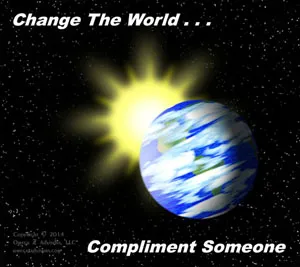Examples of Breaking the Consensus Addiction
Ryan Hatch, a software entrepreneur of Resultech, tweeted me in regards to my post, “Breaking through Consensus”. He suggested examples of breaking the consensus:
Good article on why breaking consensus is good for innovation. Would help if you could provide examples on how to break out.
Processes should fit the decision not the reverse. Change the process. Change the decision. It is a basic way to help people think on new lines. Yet, talk of decision making processes is rare.

Breaking the consensus addiction helps to promote innovation by avoiding the watering down of ideas.
Inclusion Creep in Decision Making
Just as there is always the danger of scope creep in project management, this age of stakeholders and collaboration promotes inclusion creep. The more buy-in we get the better, right? It is this thinking that turns consensus into an addiction.
How do we go about breaking the consensus addiction? The planning process and its documentation is an example.
Planning Example of Breaking the Consensus Addiction
As with any addiction, the first step is to reduce temptation. An alcoholic does not keep alcohol in the house. A dieter does not house junk food. Group decisions are very tempting. They reduce individual risk.
To remove this temptation, plans should include the:
- Decisions or types of decisions they need
- Decision process or processes they will use
- People who will make these decisions
Holding specific people responsible for tasks is common practice. It is not so with decisions. Plans often leave them out. As a result, stakeholders and collaboration easily creep to include decision making powers or at minimum veto power.
In short, breaking the consensus addiction means defining the rules and responsibilities for decisions upfront. In planning that means defining such terms as decision maker, stakeholder, collaborator and subject matter expert. The plan should show how these latter ones differ from decision makers.
This is just basic expectation setting. These other expectations should be included about the planning process:
- Input does not always mean including it in the final plan.
- Buy-in does not mean they must agree.
The fear of not including their input or gaining their agreement makes breaking the consensus addiction hard. How do people enthusiastically endorse a plan if we do not do this?
Gaining Endorsements without Including Their Ideas and Agreement
 Here are the answers to gaining endorsements without including their ideas and agreement:
Here are the answers to gaining endorsements without including their ideas and agreement:
- Building strong relationships
- Communicating honestly what they can expect from the planning process
- Listening actively to leverage those relationships
- Reinforcing their value and our confidence in them
It is conflict management lite. In short, they endorse the plan because they want to help us. They value our relationship. We listened.
We show them that our relationship is not a transactional one. We do not politick for buy-in via the currency of input and agreement. Our relationship is is based on who they are. It is based on the value they bring to making the plan a reality.
In short, breaking the consensus addiction is about leveraging strong relationships.


